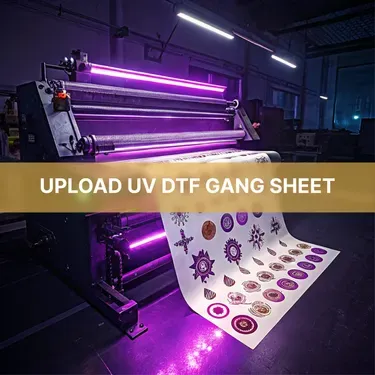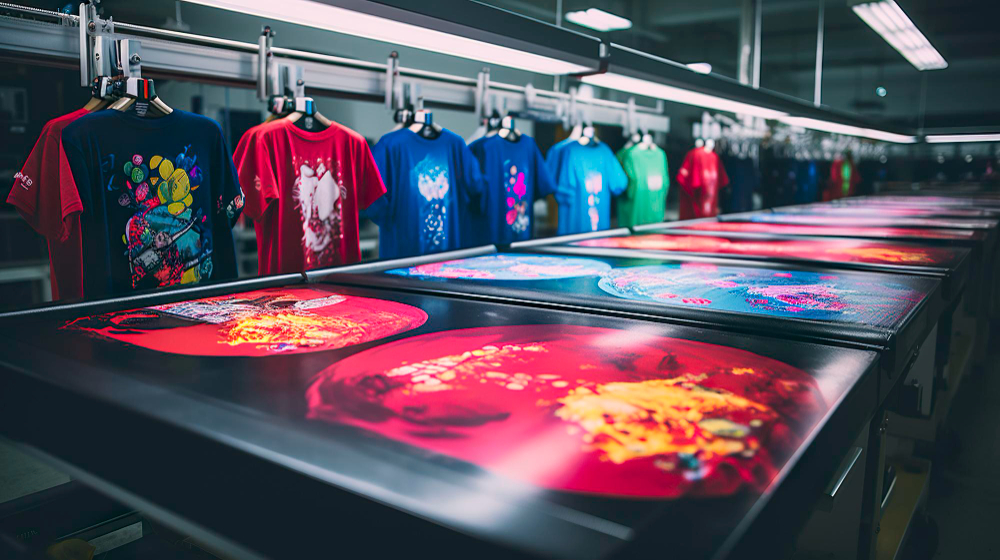DTF Transfers: The Ultimate Guide to Tips and Techniques
DTF transfers, or Direct-to-Film transfers, are transforming the fabric printing landscape with their exceptional ability to produce vivid and long-lasting designs. This groundbreaking printing technology is rapidly gaining traction among custom printing solutions, particularly in the apparel sector where intricate designs are in high demand. Unlike traditional methods, DTF printing allows for a seamless application process that results in high-quality prints perfect for clothing, promotional products, and more. As the market for bespoke fashion continues to grow, understanding DTF transfers becomes crucial for anyone looking to thrive in the competitive custom apparel industry. In this article, we’ll explore essential DTF printing tips and techniques to ensure your projects not only meet but exceed expectations.
Also known as Direct-to-Film printing, DTF transfers represent a new era in printing technology that allows users to apply stunning graphics directly onto a variety of fabrics. This method combines efficiency with quality, ensuring that every print captures the essence of vibrant colors and detailed designs. Many refer to this technique as a game-changer for the custom garment printing sector, enabling creators to produce unique and professional-looking apparel with ease. In this comprehensive DTF printing guide, we will unpack the fundamental processes and essential methodologies that can enhance your understanding and implementation of DTF transfer techniques. Whether you are a seasoned printer or a novice, mastering these innovative printing methods will empower you to achieve outstanding custom printing results.
What Are DTF Transfers and Their Benefits?
DTF transfers, or Direct-to-Film transfers, represent a cutting-edge method in the realm of custom printing solutions. By enabling the creation of vibrant, intricate designs that are easily transferred to fabric, this technology caters to a variety of industries, including fashion, merchandising, and promotional products. One significant benefit of DTF printing is its ability to produce high-quality prints that retain their color and detail after multiple washes, making it an attractive option for businesses that demand durability.
Another advantage of DTF transfers is the versatility they offer. Unlike traditional printing methods, which often restrict designs to simple shapes and colors, DTF allows for a wide range of color choices and complex imagery. This flexibility means designers can experiment with various styles, enhancing their product appeal in a competitive market. Additionally, DTF printing techniques are compatible with various fabrics, from cotton to polyester, further expanding its usage in diverse applications.
Understanding the DTF Transfer Process in Detail
The DTF transfer process consists of four vital steps: printing on the film, powder application, curing the transfer, and heat pressing. Initially, the design is printed onto a specific film using a high-quality DTF printer, typically a modified Epson model. This first step is crucial, as the selection of printer and ink significantly influences the print’s vibrancy and adhesion. After printing, a layer of hot melt powder is applied to the wet ink, bonding the design to the film, a technique that ensures a seamless transfer.
Following the powder application, the film must undergo curing, which involves applying heat to solidify the powder and prepare the design for pressing onto the fabric. This curing process is essential for establishing a durable bond that can withstand washing and wearing. Finally, the transfer is heat pressed onto the chosen substrate at controlled temperature and pressure. Understanding these steps can dramatically improve printing outcomes, making it essential for anyone in the DTF printing landscape to master the process.
Top Tips for Successful DTF Transfers
To achieve optimal results in DTF transfers, focusing on the quality of materials is key. Selecting high-quality DTF inks specifically formulated for this type of printing ensures vibrant color output and effective adhesion to various substrates. Poor-quality inks can produce lackluster prints and negatively impact durability. Similarly, choosing the right transfer film designed explicitly for DTF printing is critical; using films that can withstand heat application will significantly enhance print quality.
Additionally, printer compatibility cannot be understated. Ensuring that your equipment aligns with DTF technology will simplify the printing process. Many successful operations utilize modified Epson printers, which are known for their adaptability to DTF requirements. Following manufacturer guidelines for heat settings is equally crucial, as different fabrics require specific temperatures and pressures to achieve proper adhesion and finish, preventing premature print failures.
Latest Trends and Innovations in DTF Printing
As the demand for DTF printing continues to rise, notable trends are shaping the industry, with sustainability at the forefront. Many businesses are now seeking eco-friendly inks and films that align with the growing consumer consciousness regarding environmental impact. Eco-friendly options not only appeal to a broader audience but also provide a competitive edge by offering sustainable alternatives in the custom printing market.
In addition to eco-conscious innovations, automation is revolutionizing the DTF transfer process. New technologies are emerging that streamline the powder application and curing stages, drastically reducing labor costs and enhancing consistency in print quality. Businesses embracing these advancements ensure they are at the cutting edge of the DTF printing landscape, poised to meet evolving consumer expectations for quality and sustainability.
Common Challenges in DTF Printing and How to Overcome Them
Despite its advantages, DTF printing comes with its own set of challenges that can hinder productivity and print quality. One common issue is inconsistent powder application, which can result in uneven transfers and defective prints. To overcome this, operators must calibrate their equipment to ensure uniform powder distribution, and employing an automated system can help streamline this step while improving consistency.
Another challenge lies in the curing process. Inadequate curing can lead to poor adhesion and premature failure of the prints. To tackle this, it’s essential to monitor the curing temperature and duration carefully, as different materials may require tailored settings. Regularly maintaining and servicing the printing equipment can also help mitigate issues related to print quality, ensuring that operations run smoothly.
Essential Maintenance Tips for DTF Printing Equipment
Maintaining DTF printing equipment is crucial for achieving high-quality results consistently. Regular cleaning of the printer heads and components prevents clogs and ensures smooth ink flow, which is essential for vibrant prints. Establishing a cleaning schedule that includes daily maintenance can help avoid technical problems that could complicate the printing process.
In addition to regular cleaning, it’s also important to monitor the ink levels and replace the DTF inks frequently to avoid interruptions in production. Storing ink properly in specific environmental conditions helps preserve its quality and ensures that prints remain vibrant. Depending on the volume of prints, businesses should consider scheduling routine checks to verify equipment functionality and prevent any unexpected downtimes.
Frequently Asked Questions
What are DTF transfers and how do they work?
DTF transfers, or Direct-to-Film transfers, are an innovative printing method that involves printing a design onto a special coated film, applying hot melt powder, and then curing it before heat pressing onto fabric. This three-step process allows for vibrant and durable prints on various substrates, perfect for custom apparel.
What are some essential DTF printing tips for beginners?
For beginners in DTF printing, essential tips include using high-quality inks designed for DTF technology, selecting the right films specifically made for DTF transfers, ensuring printer compatibility (like modified Epson printers), and following accurate heat transfer guidelines for various fabrics.
How can I ensure the longevity of my DTF prints?
To ensure the longevity of DTF prints, pre-treat fabrics to enhance adhesion, use eco-friendly DTF inks and films when possible, and follow washing guidelines, such as washing in cold water and avoiding bleach. Proper heat settings during application also play a crucial role in print durability.
What should I consider when choosing DTF printing materials?
When selecting materials for DTF printing, consider the quality of the inks, the type of transfer films that offer good heat resistance, and the compatibility of your printer with DTF technology. Choosing the right materials enhances print quality and ensures smooth transfers.
What are the common mistakes to avoid in DTF transfer printing?
Common mistakes in DTF transfer printing include using poor quality inks, not adhering to specified heat transfer guidelines, and neglecting the importance of a consistent powder application. These mistakes can result in dull prints, poor adhesion, and overall inconsistency in print quality.
How have innovations improved DTF printing techniques?
Innovations in DTF printing techniques include the use of eco-friendly inks and films to cater to sustainable practices and the introduction of automation in powder application, improving efficiency, consistency, and reducing labor costs in the production process.
| Key Points | Description |
|---|---|
| DTF Transfers | A modern printing technique that transfers designs onto fabrics. |
| Three-Step Process | 1) Printing on the film, 2) Powder application, 3) Heat pressing. |
| Essential Elements | Quality inks, suitable transfer films, printer compatibility, and correct heat settings. |
| Innovation Trends | Adoption of eco-friendly materials and automation in the application process. |
| Benefits of DTF | Produces vibrant, durable prints and allows for intricate designs. |
Summary
DTF transfers are transforming the landscape of custom printing, providing an innovative method for applying stunning designs to fabrics. By capitalizing on the versatility and quality of Direct-to-Film technology, businesses and crafters can produce eye-catching apparel that stands the test of time. With tips on quality inks, the right materials, and adherence to heat transfer guidelines, the DTF process becomes an essential tool for anyone looking to thrive in the competitive custom printing market. As sustainability continues to influence consumer choices, embracing eco-friendly innovations in DTF transfers will not only meet market demands but also enhance brand reputation. Stay informed about the latest developments and techniques in DTF transfers to ensure exceptional results in your projects.







